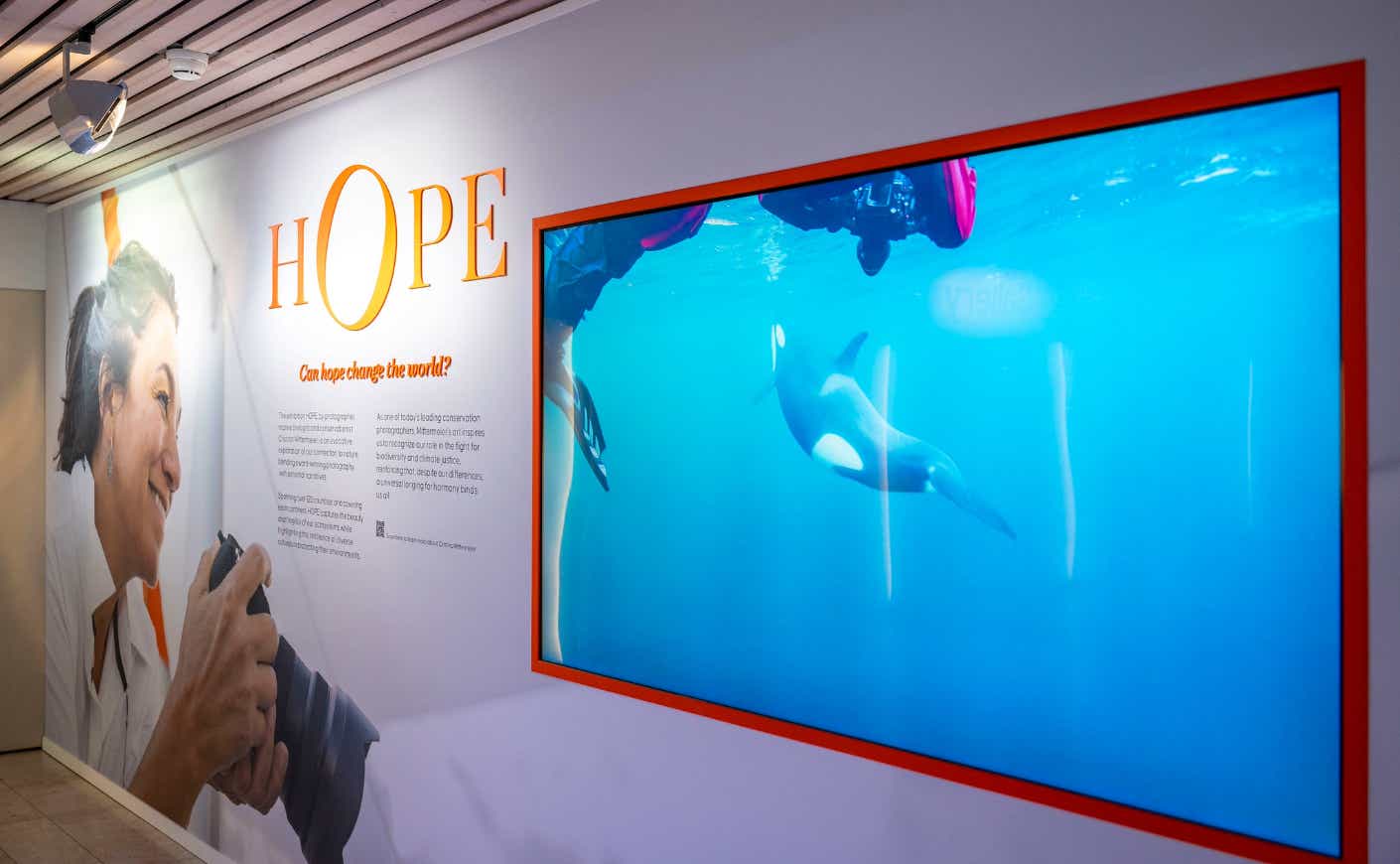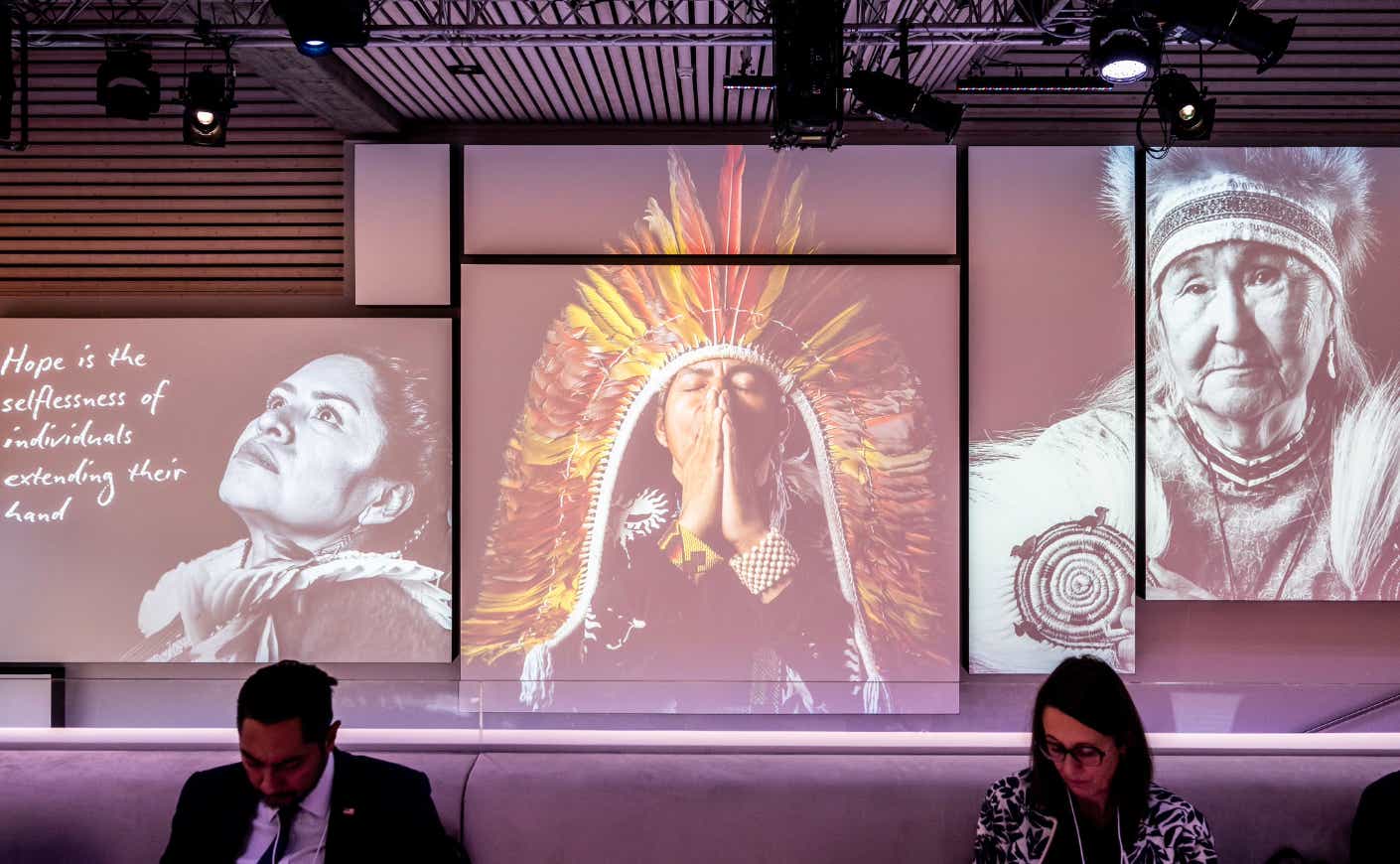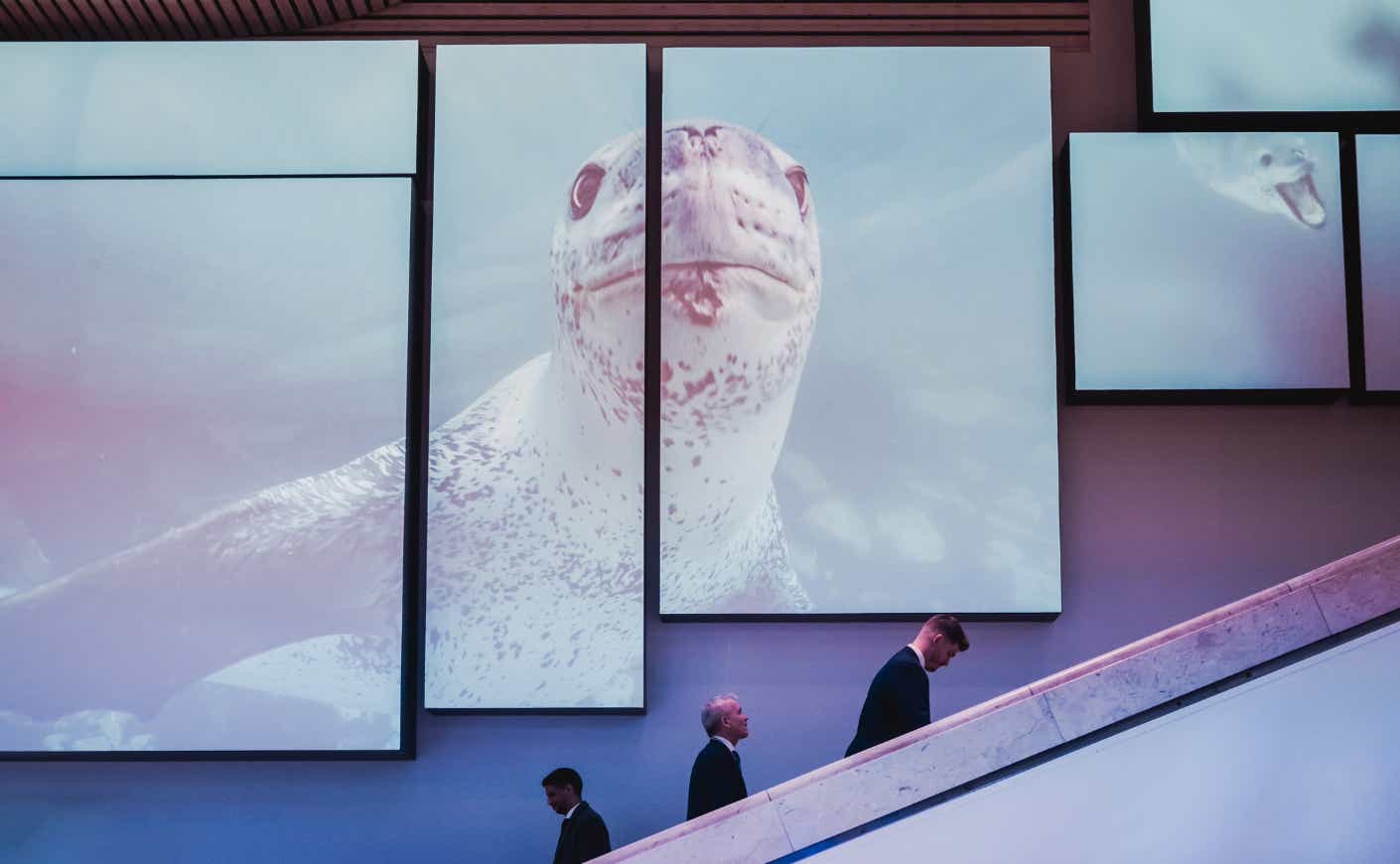Art has given me an unparalleled opportunity to engage openly in some of the most important conversations of our lifetime.
As a cultural leader at the World Economic Forum’s Annual Meeting in Davos last month, I was reminded just how effective and meaningful art can be. Commissioned by the Forum, Hope was a large-scale digital exhibition based on my recently published book of the same name. Under the guidance of Joseph Fowler, Head of Arts and Culture at WEF, the larger-than-life display captured the fragile beauty of Earth’s biodiversity and, through honest portraiture, conveyed the wisdom and fighting spirit of Indigenous Peoples who have been managing it sustainably for millennia.
It was inspiring to watch other artists like Yo-Yo Ma and Angélique Kidjo, along with cultural leaders like Melanie Brown, David Beckham, Riken Yamamoto, Diane von Furstenberg, Gary Tyler, Misty Copeland, Nile Rodgers, and many others take the stage to share their perspectives. Al Gore, former vice president of the United States, noted from the main hall that nature has never before had such a central position at this high-profile annual gathering. In addition, this year marked the inaugural Giving To Amplify Earth Action Awards ceremony, acknowledging five initiatives.

Being an artist demands that the art itself reflect the artist’s point of view. We need art now more than ever, and I commend the WEF for integrating artists into the mainstream program of this important forum.
I aspire to live a life in alignment with the words of one of my heroes, Dr. Martin Luther King Jr., who said, “Our lives begin to end the day we become silent about things that matter.”
I was not silent in Davos. I used my voice to amplify the voices of those uninvited or unable to speak. I used my voice to tell as many who would listen through my Betazone Session called “Turning the Tide on Ocean” that we have surpassed six of the nine planetary boundaries. This scientific framework defines the safe limits of human impact on Earth’s nine critical regulatory processes, like climate. In essence, planetary boundaries ensure that Earth remains habitable, and surpassing these boundaries increases the risk of irreversible environmental change. It’s terrifying to know that we are close to surpassing a seventh boundary: ocean acidification.
I was not silent about the broken capitalistic system that puts financial returns on investment above everything else, and I shared economist Kate Raworth’s concept of Donut Economics every chance I got. Whether these theories fell on deaf ears is something I may never know. What I do know is that everyone I spoke to agreed that change is needed. Everyone, from the world’s leading artists, performers, and athletes to presidents, ministers, scientists, bankers, and lawyers, is doing what they can to change the system from the inside — or, at least, many say that they are.

I came to the annual meeting not to bring hope, but to find it.
I found hope in attending Professor Johan Rockström’s presentation, which expanded on the planetary boundaries I briefly referred to in my presentation. I found hope in listening to the prime minister of the Kingdom of Bhutan speak on a panel called “Big Ideas from Small Economies,” highlighting the outdated and broken system that puts a nation’s continually increasing gross domestic product above all.
Our financial system is based on GDP, a system invented in the 1930s, and is used to measure the economic health of a country or region. The world was a different place back then, and using a system that’s nearly 100 years old to fix our problems today is not only foolish, but it’s devastating our planet. In nature, when something grows without limits or boundaries and offers no intrinsic infrastructure to rejuvenate a finite resource, we call it cancer.

I don’t know if the exhibition or the other work on display motivated any of the nearly 3,000 global leaders to prioritize people and the planet in their work or whether it’s all just words that will fade away without meaningful or effective action. What I do know is that nature was integrated into the discussions in a bigger way than ever before, and those discussions were held on a global platform accessible and transparent to all. Arts and culture, too, were given more prominence than in previous years.
These are some of the things that give me hope.
Paul Nicklen and Cristina Mittermeier co-founded SeaLegacy in 2014. SeaLegacy’s mission is to inspire people to fall in love with the ocean, amplify a network of changemakers around the world, and catalyze hands-on diplomacy through hopeful, world-class visual storytelling. For more updates on their meaningful work, learn more about SeaLegacy, and subscribe to Ripple Effect, Katie Couric Media’s sustainability newsletter.









